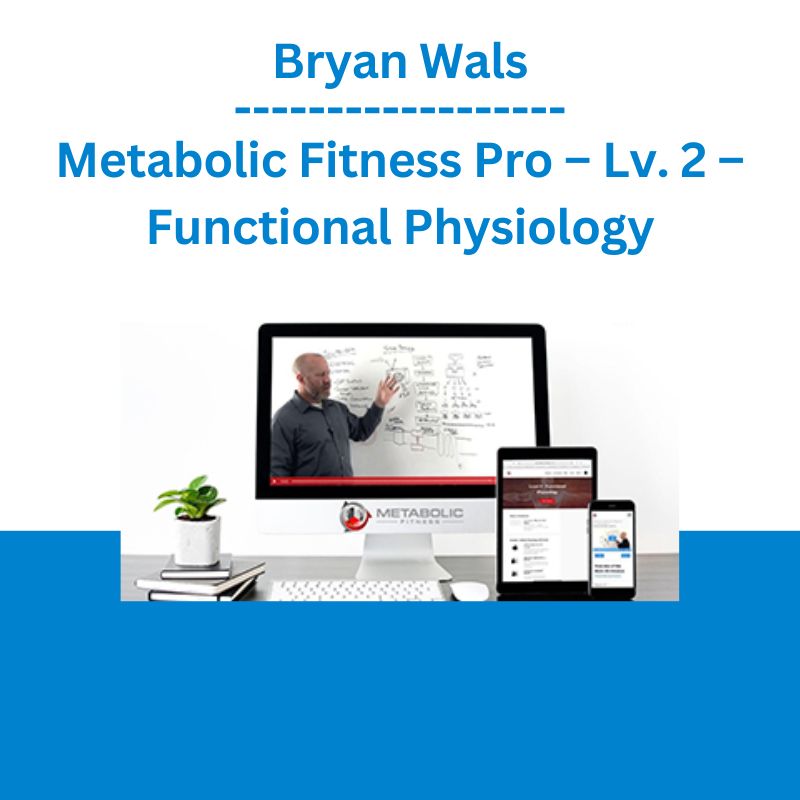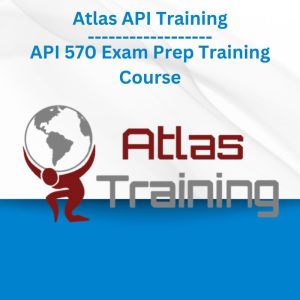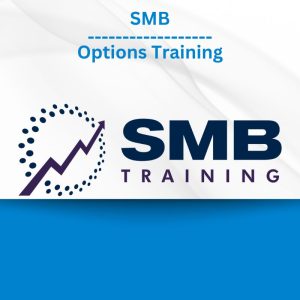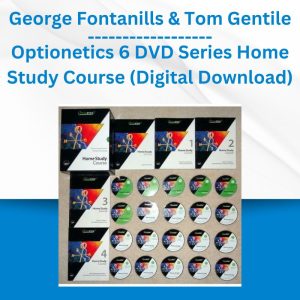*** Proof of Product ***

Exploring the Essential Features of “Bryan Walsh – Metabolic Fitness Pro – Lv. 2 – Functional Physiology”
The Search for “The Next Big Thing” in Functional Medicine Stops Here
A solid understanding of physiology is a little known secret to success in clinical practice, yet few practitioners are well versed in it. With a strong working knowledge of physiology, critically evaluating conditions and therapeutic measures becomes simple.
Practitioners Need A Solid Understanding of Physiology to Be Successful.
Functional Medicine today tends to glamorize and sensationalize new pathways, lab tests, and diagnoses. Unfortunately, we end up completely overlooking fundamental physiological information that has formed the basis in medicine for a long time. This is a HUGE disservice to patients and practitioners as physiology is quite literally how the body functions in the first place.
Without it, you stay in an endless, uncomfortable cycle of guessing what to do with your patients.
❌Searching for the next best thing in Functional Medicine (lab tests, supplements, protocols, diagnosis).
❌Confusion over conflicting advice in the industry and aren’t sure how to find a definitive answer yourself.
❌Limited Understanding – You repeat things you’ve heard, but when pressed, you cannot explain them further.
❌Dependence on supplement companies, lab companies, industry gurus, or Google to base your clinical decision making.
“Dr Walsh has continually impressed me with his knowledge of the science, his willingness to dig deeper than anyone else and his innovative, realistic and supportive approach to teaching. His whiteboard presentations are nothing less than enlightening. If you are a learn-freak like the rest of us, who also wants to be able to apply the knowledge in clinical practice, all of Dr Walsh’s courses will be practical and useful.”
Reed Davis | Founder FDN®, CNT
Most Physiology Courses Aren’t Taught Well…
This One is Different
Most physiology courses teach all of the systems in a silo – learn about the kidneys, then the lungs, then the heart – and keep doing that until you’ve taught the entire body. There is rarely, if any, discussion how systems integrate and interact with one another, or how the information relates to a clinician.
Another problem with most courses, is they don’t look to the scientific literature on the best ways to teach physiology.
For example, research papers have been written suggesting that instead of trying to teach hundreds of different concepts in physiology, spanning over 1,000 pages for the average physiology text book, “core principles” should be focused on so to better create a foundation for understanding physiology.
That is exactly what our course does – in 20 hours of video lectures, you’ll learn a TON, but you’ll also learn “core principles” that will allow you to more easily learn advanced physiology later on.
In fact in Module 1 alone, we teach cover levels of organization, cell architecture, cell membrane components and physiology, cellular junctions and connections, membrane transport, and cell-to-cell communication – exactly what the “core principles” say we should teach!
One research paper surveyed medical school students and suggested a combination of writing on the chalkboard and PowerPoints is their preferred method of learning physiology. This was backed by yet another paper, demonstrating that this is the best combination for learning!
If you haven’t noticed yet, our white board drawings are the focus of our courses, with PowerPoints sprinkled in.
In other words, we teach EXACTLY how science demonstrated is the best way to learn! There really is no comparison between this course and other physiology courses.
We don’t rely on or promote memorization. Instead we encourage you understand concepts and “core principles” so to truly learn, internalize, and apply the information.
“I love the way Dr. Walsh lays out his courses. It is like working your way through a Mystery Novel. You can’t wait to get to the end to see who did it. Dr. Walsh not only logically explains the complexity of physiology, but he is wonderfully entertaining in doing so. Never bored ever. Thank you Dr. Walsh. You are a great teacher.”
Linda Merlo | Owner, SPOT Imaging
We Don’t Just Teach Physiology, We Teach Functional Physiology
Functional Physiology is quite simply usable physiology. It is physiology that you can use clinically.
Everyone knows there is theory, and there is reality, but they don’t always mix very well, especially when it comes to education and a clinical practice.
Functional Physiology is different. Here you’ll learn how to relate what you learn to a clinical practice. For example, you’ve inevitably heard about the blood brain barrier, but do you know what cells create it or what it actually looks like? Have you heard that certain supplements might be supportive of the blood brain barrier? Armed with the information in this course you’ll know and understand more about the blood brain barrier than the majority of practitioners, which gives you the opportunity to help even more people.
And the blood brain barrier is just ONE of hundreds of examples in this course.
Course Details
Module 1
Cellular Physiology
In this module, we go deep into a subject that is imperative for practitioner to know. Topics covered include: body water compartments, architecture of the cell, cell membrane physiology and components, cellular junctions and connections, membrane transport, osmosis, resting membrane potential, and cell-to-cell communication.
Module 2
Tissues
Most people don’t think much about tissues, but there is so much to know! This module covers the need-to-know information about epithelial tissue, connective tissue, and muscle tissue, in easy-to-understand ways that will never have you wondering the role or function of any tissue in the body.
Module 3
Muscle
In this popular module you’ll learn skeletal muscle anatomy and a detailed look at skeletal muscle contraction. You’ll also learn about force-length relationships and twitches in skeletal muscle, including concepts about motor units and different types of skeletal muscle. You’ll also lean about smooth muscle anatomy and contraction, as well as cardiac muscle.
Module 4
Nervous System Intro
Have you ever seen an intro over two hours long? That’s because in this module we will be covering how the nervous system is organized, parts of a neuron, types of neurons and nervous system terminology, neuron action potentials, neurotransmission, neurotransmitters, and long-term potentiation.
Module 5
Central Nervous System
This module is incredible. Four and a half hours of learning about neuroglial cells, meninges, cerebral spinal fluid, anatomy of the spinal cord, overview of the brain, cerebral lobes, basal ganglia, hypothalamus, thalamus, cranial nerves, cerebellum, brainstem, Broadmann areas, reticular formation, and reflex arcs. After watching this module, you’ll be a changed person. 😊
Module 6
Peripheral Nervous System
In this important module, you’ll learn about sensory receptors, as well as spinal cord tracts. (Yes, we know tracts are in the central nervous system, but did you see how long that module was already? We include them here.) Tracts include ascending tracts, such as the dorsal-medial-lemniscus, spinothalamic and spinocerebellar tracts. Descending tracts include the cortocospinal, vestibulospinal, and reticulospinal tracts.
Module 7
Autonomic Nervous System
In this final module for this course, we cover the basics of the autonomic nervous system, sympathetic and parasympathetic pathways, as well as adrenergic and cholinergic receptors.
In This 17 Hour Course, You Will Learn:
✔️ Details about cellular function, including important information about the cell membrane, how it works, how it communicates with other cells, and how molecules are transported across the cell membrane.
✔️ The different type of tissues, taught in such a way that you will always remember them. Never again will you be confused if you hear about a specific tissue type, what its role is, and where it’s found in the body.
✔️ How skeletal muscle and smooth muscle contract, in detail, as well as why muscles are stronger in certain joint positions than others.
✔️ Every element of the brain and central nervous system you’ve ever wanted to know including:
✔️ Terminology and parts of a neuron, neuronal action potentials, neurotransmission, and long-term potentiation.
✔️ Neuroglial cells, meninges, cerebral spinal fluid, cerebral lobes, basal ganglia, hypothalamus, thalamus, cranial nerves, brainstem, and the reticular formation.
✔️ Ascending and descending tracts, sensory receptors, sympathetic and parasympathetic pathways, adrenergic and cholinergic receptors
✔️ And much, much more…
Not only will you have an incredible working knowledge of these subjects, but you’ll understand how these things work together to the point that you can have educated conversations with your colleagues about them (or know more than them!).
After taking this course, you have the tools and foundation for CLINICAL SUCCESS. You’ll have:
- A strong working and conversational knowledge of fundamental, as well as advanced, physiological systems and interactions.
- The ability to view and evaluate your clients from a more well-informed physiological perspective.
- Self-confidence knowing you will be better at clinical decision making and strategic thinking.
- The ability to critically think through clinical cases using a deeper knowledge of physiology.
Not only that, our learning guides help you retain and reference the information.
This isn’t just a course, it’s an 8-Week, Full-Immersion Program. This includes:
✔️ Step-By-Step Action Plan to keep you motivated and on-track to complete the program
✔️ Study Guides and Worksheets to keep you engaged and actively learning the material
✔️ Module Quizzes and a Final Exam to self-evaluate understanding and demonstrate mastery
Please see the full list of alternative group-buy courses available here: https://lunacourse.com/shop/










 Trade Like Mike - The TLM Playbook 2022
Trade Like Mike - The TLM Playbook 2022  Atlas API Training - API 570 Exam Prep Training Course
Atlas API Training - API 570 Exam Prep Training Course  Fred Haug - Virtual Wholesaling Simplified
Fred Haug - Virtual Wholesaling Simplified  SMB - Options Training
SMB - Options Training  Oliver Velez - Essential Strategy Of Trade For Life
Oliver Velez - Essential Strategy Of Trade For Life  Ed Ponsi - Forex Trading
Ed Ponsi - Forex Trading  Erik Banks - Alternative Risk Transfer
Erik Banks - Alternative Risk Transfer  Team NFT Money - Ultimate NFT Playbook
Team NFT Money - Ultimate NFT Playbook  Greg Loehr - Advanced Option Trading With Broken Wing Butterflies
Greg Loehr - Advanced Option Trading With Broken Wing Butterflies  Jesse Livermore Trading System - Joe Marwood
Jesse Livermore Trading System - Joe Marwood  George Fontanills & Tom Gentile - Optionetics Wealth Without Worry Course
George Fontanills & Tom Gentile - Optionetics Wealth Without Worry Course  Crypto Dan - The Crypto Investing Blueprint To Financial Freedom By 2025
Crypto Dan - The Crypto Investing Blueprint To Financial Freedom By 2025  George Fontanills & Tom Gentile - Optionetics 6 DVD Series Home Study Course (Digital Download)
George Fontanills & Tom Gentile - Optionetics 6 DVD Series Home Study Course (Digital Download)  Julie Stoian & Cathy Olson - Launch Gorgeous - Funnel Gorgeous Bundle
Julie Stoian & Cathy Olson - Launch Gorgeous - Funnel Gorgeous Bundle  David Deida - Live from Boulder
David Deida - Live from Boulder  Simpler Trading - Bruce Marshall - The Options Defense Course
Simpler Trading - Bruce Marshall - The Options Defense Course  Forexmentor - Recurring Forex Patterns
Forexmentor - Recurring Forex Patterns  David Deida - Live in San Francisco 2016
David Deida - Live in San Francisco 2016